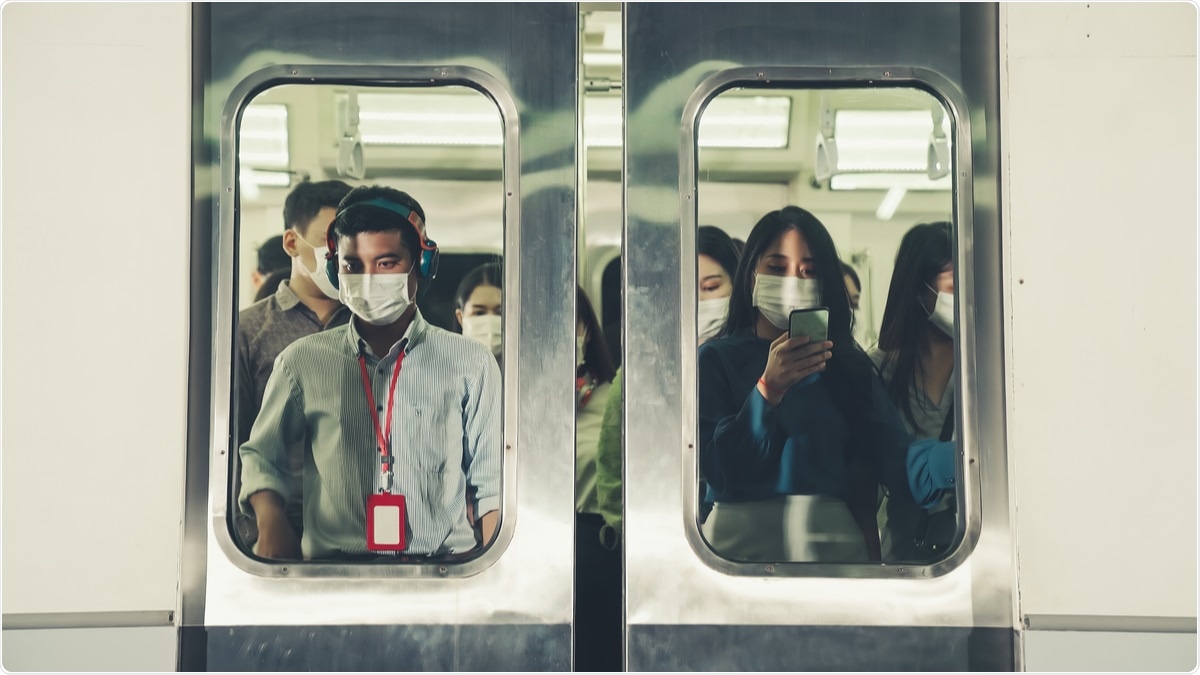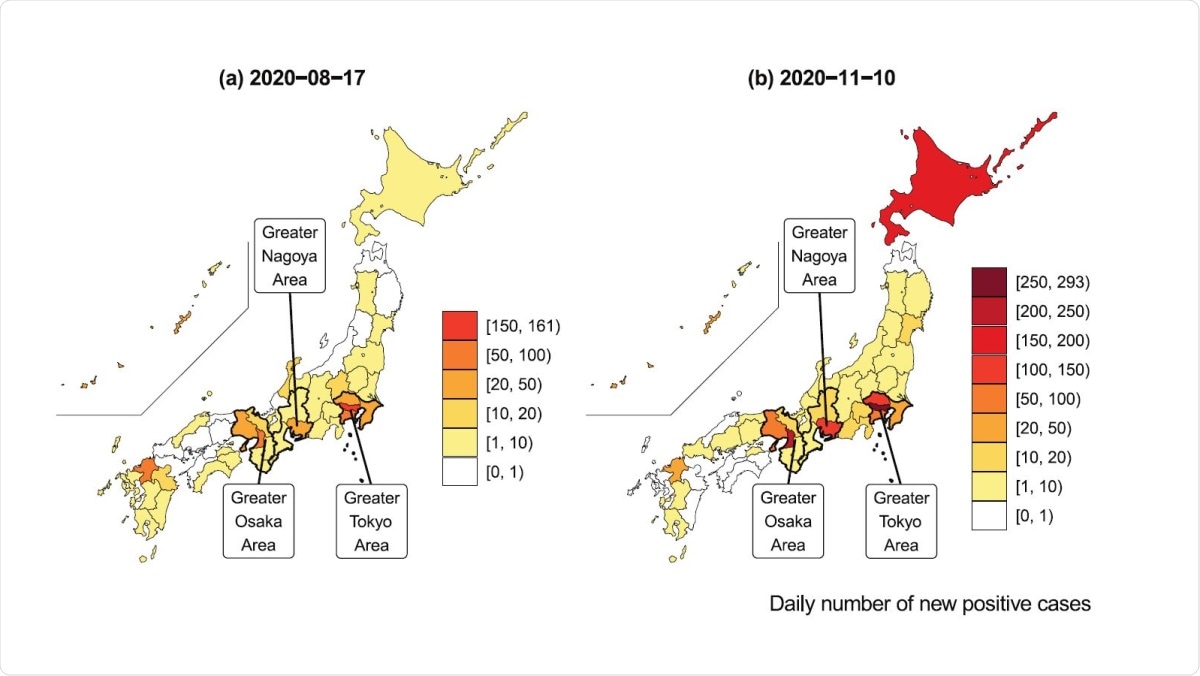A study led by Dr. Keisuke Kondo at the Research Institute of Economy, Trade and Industry, Japan, has recently developed a spatial Susceptible–Exposed–Infectious–Recovered (SEIR) model to investigate the impacts of interregional mobility restriction on the transmission of severe acute respiratory syndrome coronavirus 2 (SARS-CoV-2), the causative pathogen of coronavirus disease 2019 (COVID-19). The study findings indicate that wide geographical spread of COVID-19 cases can be prevented by restricting movements between prefectures; however, mobility restriction seems to have limited effects on reducing the overall prevalence of COVID-19 nationwide. The study is currently available on the medRxiv* preprint server.


 This news article was a review of a preliminary scientific report that had not undergone peer-review at the time of publication. Since its initial publication, the scientific report has now been peer reviewed and accepted for publication in a Scientific Journal. Links to the preliminary and peer-reviewed reports are available in the Sources section at the bottom of this article. View Sources
This news article was a review of a preliminary scientific report that had not undergone peer-review at the time of publication. Since its initial publication, the scientific report has now been peer reviewed and accepted for publication in a Scientific Journal. Links to the preliminary and peer-reviewed reports are available in the Sources section at the bottom of this article. View Sources
The COVID-19 pandemic, which has already infected more than 85.8 million people and claimed 1.85 million lives globally, has been considered one of the biggest pandemics in modern history. Although several vaccines are currently rolling in many countries, the initial management of the viral spread has mostly been done by implementing various non-pharmacological control measures, such as mandatory mask wearing, hand washing, maintaining physical distancing, and movement restrictions. However, because of the government-imposed lockdowns and movement restrictions, many countries have faced severe economic ramifications. To help offset some of the knock-on effects these preventative measures are having on national economies, it is therefore important to evaluate how these control measures, especially lockdown or movement restrictions, affect the spatial dynamics of viral transmission.
The current study has been conducted to understand how interregional mobility restriction impacts the spatial transmission of SARS-CoV-2 in Japan.
Current study design
The scientists have developed a spatial Susceptible–Exposed–Infectious–Recovered (SEIR) model, assuming that people travel to their work/study locations in the daytime and return back to their residential locations at night. The model also assumes that the majority of viral exposures occur during daytime activities, indicating that people from a given location are exposed to heterogeneous sources of SARS-CoV-2 infection.
The information about interregional mobility is obtained via geospatial information technology. To develop the model, the scientists tracked the interregional mobility of people on a daily and monthly basis throughout one year.
Using the model, the team conducted a simulation analysis to compare the number of infected people under free mobility and interregional restricted mobility conditions and investigate how mobility restriction may affect the spatial spread of SARS-CoV-2.
Important observations
The study findings reveal that the implementation of movement restriction could prevent the wide geographical transmission of SARS-CoV-2 in Japan. In rural areas, interregional movements have been shown to accelerate the transmission of SARS-CoV-2 infection. Thus, movement restriction is particularly vital for rural regions where the availability and accessibility of healthcare resources are reduced.
The most surprising observation of the study is that interregional movement restriction causes an induction in COVID-19 incidence in large cities where people from different regions usually commute for work or study purposes. This indicates differential impacts of movement restrictions on infection spread across regions. According to the scientists, a reduction in infection risk may occur in a given region if many uninfected people enter the region from outside or many infected people travel out of the region during the daytime. In other words, susceptible people in large cities with high COVID-19 prevalence are at lower risk of contact exposure during daytime due to work-related movements. Thus, implementing interregional mobility restrictions without limiting intra-regional movements can actually increase the risk of SARS-CoV-2 infection among residents of large cities where the prevalence of COVID-19 is high. More strong control measures such as contact restriction are necessary in regions with high prevalence to effectively contain the viral transmission.

COVID-19 infections across prefectures. This map was constructed using data from the daily number of positive tests reported by each prefectural government.
Although it can reduce the speed of viral transmission, interregional mobility restriction has only limited impacts on reducing the total number of COVID-19 cases nationwide. Moreover, the study reveals that a reduction in COVID-19 incidence can be achieved by regional lockdowns only when the viral transmission rate is persistently low. Overall, these findings indicate that the time of the day when the mobility restriction is imposed plays a crucial role in containing the viral spread.
Study significance
Overall, the study findings reveal that interregional mobility restriction significantly alters the spatial dynamics and speed of viral transmission. However, it is not the most effective control measure to reduce the total number of SARS-CoV-2-infected people nationwide.
In rural regions where healthcare resources are scanty, interregional mobility restriction can be effective in controlling COVID-19 outbreaks and conserving existing resources.

 This news article was a review of a preliminary scientific report that had not undergone peer-review at the time of publication. Since its initial publication, the scientific report has now been peer reviewed and accepted for publication in a Scientific Journal. Links to the preliminary and peer-reviewed reports are available in the Sources section at the bottom of this article. View Sources
This news article was a review of a preliminary scientific report that had not undergone peer-review at the time of publication. Since its initial publication, the scientific report has now been peer reviewed and accepted for publication in a Scientific Journal. Links to the preliminary and peer-reviewed reports are available in the Sources section at the bottom of this article. View Sources